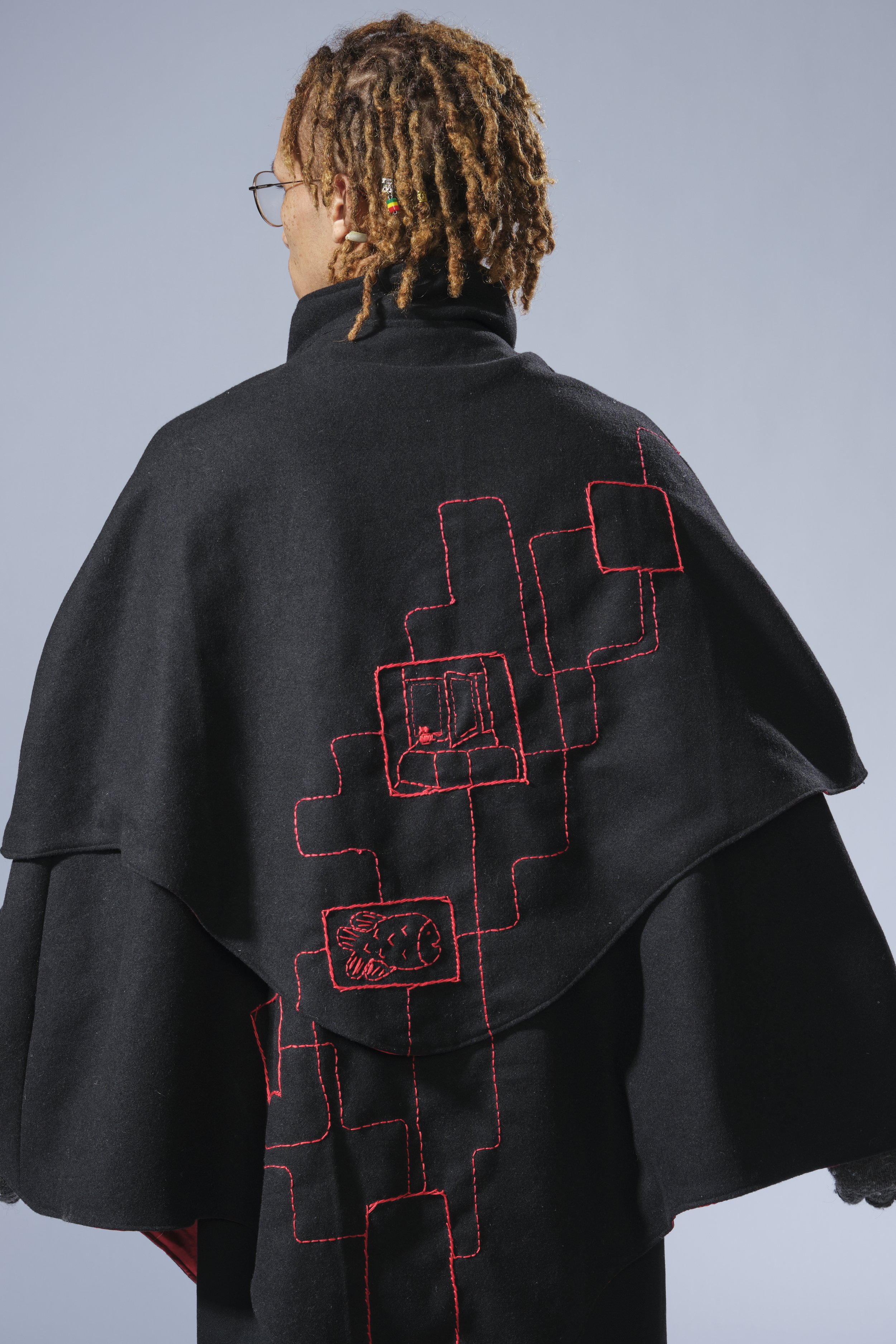Beyond Fashion
2022
The theme of this show was all based on the designs of Massimo and Lella Vignelli. The Vignellis’ commitment to high-quality materials, minimalism, and timelessness struck me as a perfect starting point. Continuing the tradition of storytelling through textiles that have existed in cultures around the globe for thousands of years, these clothing pieces are designed to be decorated with embroidered, painted, or patchwork stories from the wearer’s life. The Vignellis’ minimalism becomes a canvas on which to paint the colorful evidence of our existence.
Inspiration
Storytelling in textiles has a rich history all around the globe and throughout history.
Since the 12th century, India has used block printing to tell the stories of communities and the unique parts of every region.
Ancient Egyptian, Inca, and Greek civilizations all used tapestry weaving as a medium of storytelling. Navajo and Bangladeshi artisans use weaving as a way to pass stories down through generations. The medieval French wove bible stories into cloth. Roman emperor Charles V had a weaver sketch battle scenes on site so tapestries could later be made.
Embroidery also has been important both in history and in the more recent past. Folklore has been told through embroidery, but so have stories of political violence and resistance. During dictatorships in Peru and Colombia, traditional styles of embroidery were used to protest and tell the stories of people who had gone missing. Similar movements have mirrored this in Vietnam and Ukraine.
Scene from the Bayeux Tapestry, 1066
Violeta Morales, 1973
Sketches
Several aspects of the design changed before the pieces were finished. The color changed due to availability of material, and some of the embroidery went unfinished due to time constraints. Only two of the storytelling boxes were filled before the show, and not to the degree that I would have liked. The rest remain as blank pages.
Process
Test fittings
<——>
Embroidery process
<——
Final Photos












